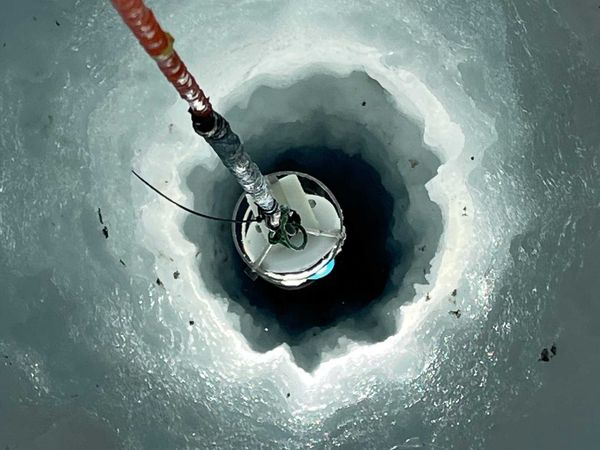Scientists Discover Strange Crustaceans Hidden 1,500 Feet Under Antarctica
When people think of Antarctica, they usually imagine endless snow, harsh winds, and temperatures that make it hard to even step outside without freezing. It’s not exactly the kind of place you’d expect to find signs of life, especially not a school of tiny creatures that look like lobsters. But that’s exactly what researchers stumbled upon during a recent expedition.
The team had set out to learn more about what’s happening beneath the massive West Antarctic Ice Sheet. Using heavy drilling equipment, they made a borehole more than 1,600 feet deep, about the height of a 30-story building.
What they found below wasn’t just more ice. Instead, they hit the water. Not a lake, but a hidden river. This river, buried under one of the most remote and frozen parts of the planet, has been out of sight for thousands of years.
It’s made up of a mix of fresh and saltwater and moves slowly beneath the Ross Ice Shelf, inching its way toward the ocean. That alone would’ve been a major discovery. But it got more interesting when the team lowered a camera into the borehole.
That’s when they spotted something unexpected: tiny animals swimming around in the dark water.
“We struck water at the end of the borehole and with the help of our camera, we even discovered a school of lobster-like creatures - 400 kilometres from the open ocean,” said expedition leader Huw Horgan.
Scientists found complex creatures under Antarctic ice.
Scientists are still trying to figure out exactly what kind of creatures these are, but their presence so far from the sea and under so much ice is surprising. It’s one thing to imagine microbes or simple organisms living in extreme conditions, but finding more complex animals like these suggests there’s a whole ecosystem beneath the ice that we barely understand.
What’s also fascinating is how this hidden river works. Researchers believe that every 10 years or so, nearby lakes drain into it, causing the river to swell.
These surges don’t just affect water level; they might also be reshaping the ice above by carving out channels as the water moves. That carving action could be moving nutrients around too, possibly helping sustain whatever’s living down there.
 commons.wikimedia
commons.wikimediaThe discovery reveals hidden melting that could accelerate sea level rise.
The discovery doesn’t just raise questions about underwater life. It also has big implications for how we understand ice melt and rising sea levels.
When subglacial rivers like this swell, they may thin the ice from below. This makes it easier for land-based glaciers to break off and slide into the ocean.
That’s a problem. If more ice makes its way into the sea, it can cause sea levels to rise faster than expected. Higher sea levels mean a greater risk of flooding, especially during storms, and more pressure on coastal cities and food systems that are already struggling with extreme weather.
In other words, finding these creatures isn’t just a fun scientific moment; it’s a signal that something much bigger is happening under the ice. This river and the strange life inside it are just part of a larger story about how the Antarctic is changing, often in ways we can’t see until we dig deep, literally.
 commons.wikimedia
commons.wikimediaWhat comes next? More research. Scientists will likely return to the area with more tools and better cameras to learn more about the river’s flow, the animals they found, and what this all means for the future of the planet.
For now, we’re left with a strange but fascinating image: a cold, dark river full of life, quietly flowing beneath one of the most remote places on Earth.




